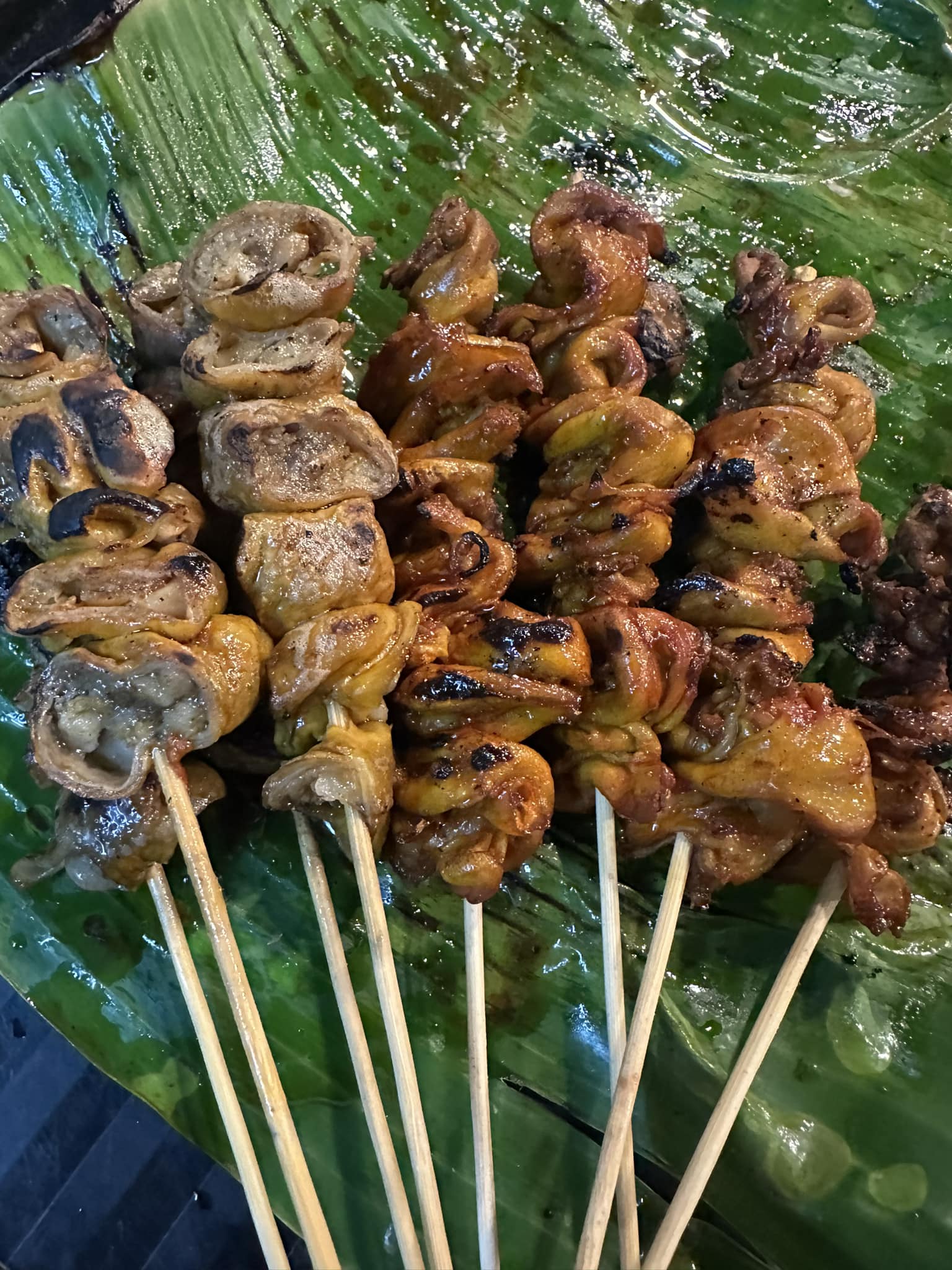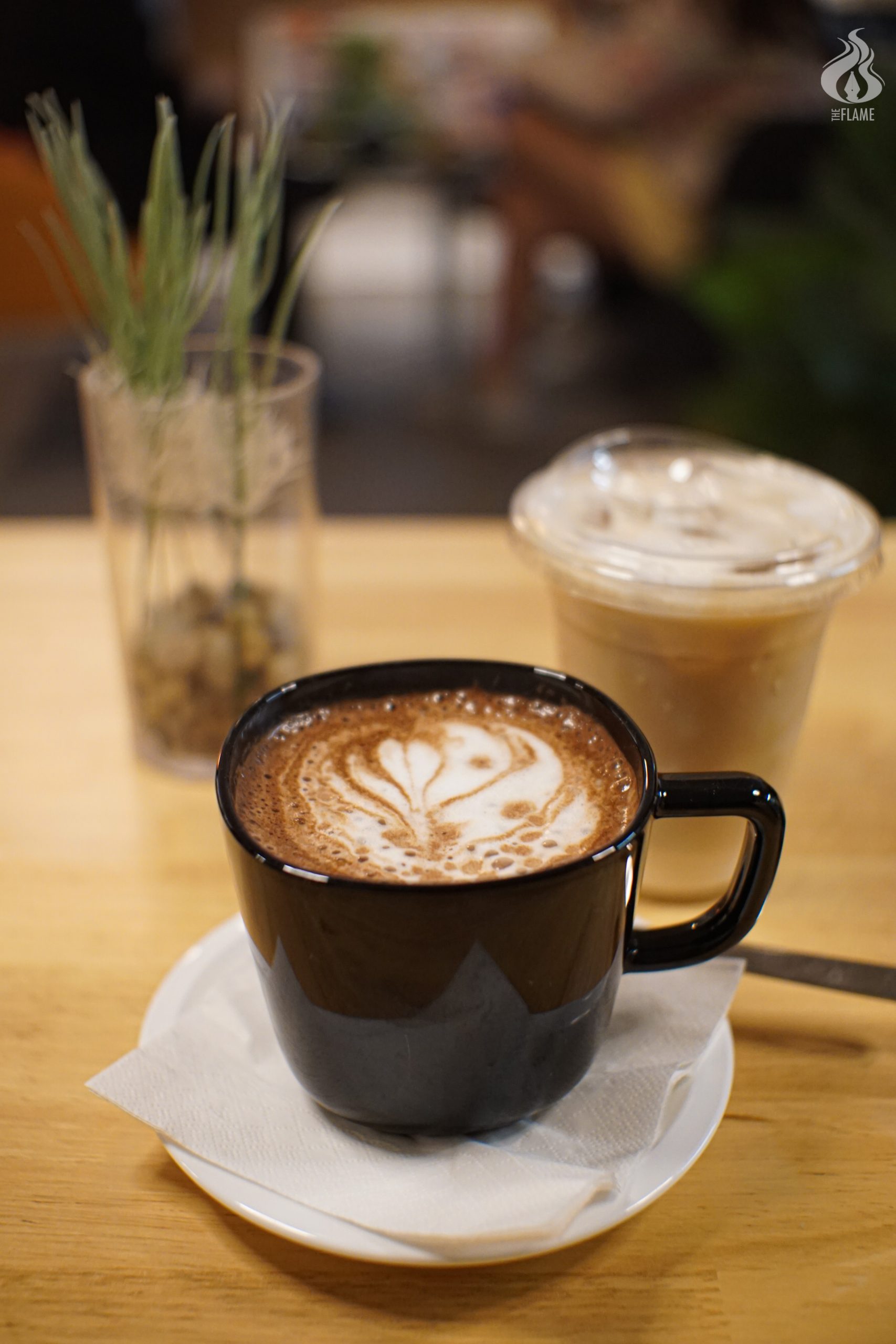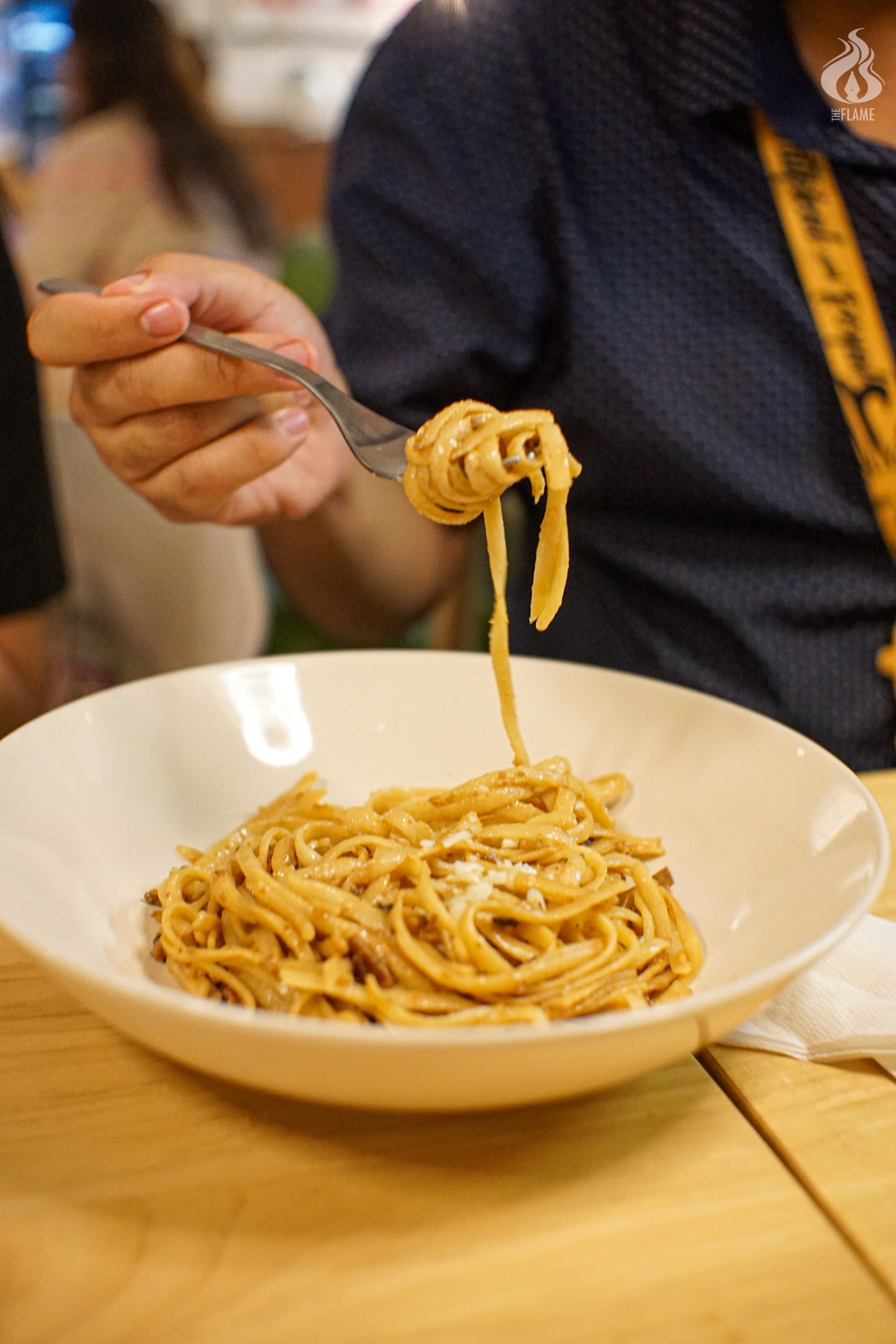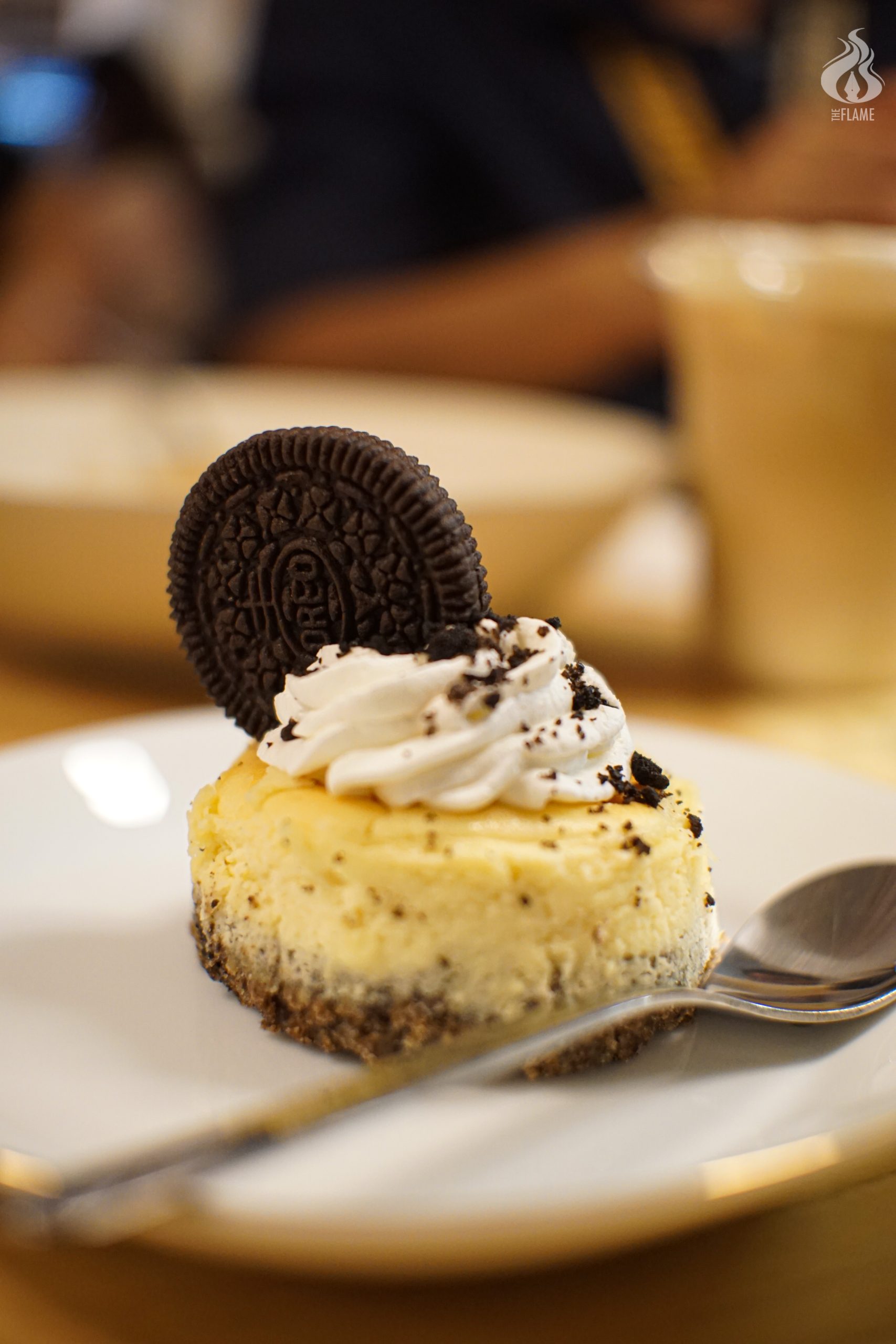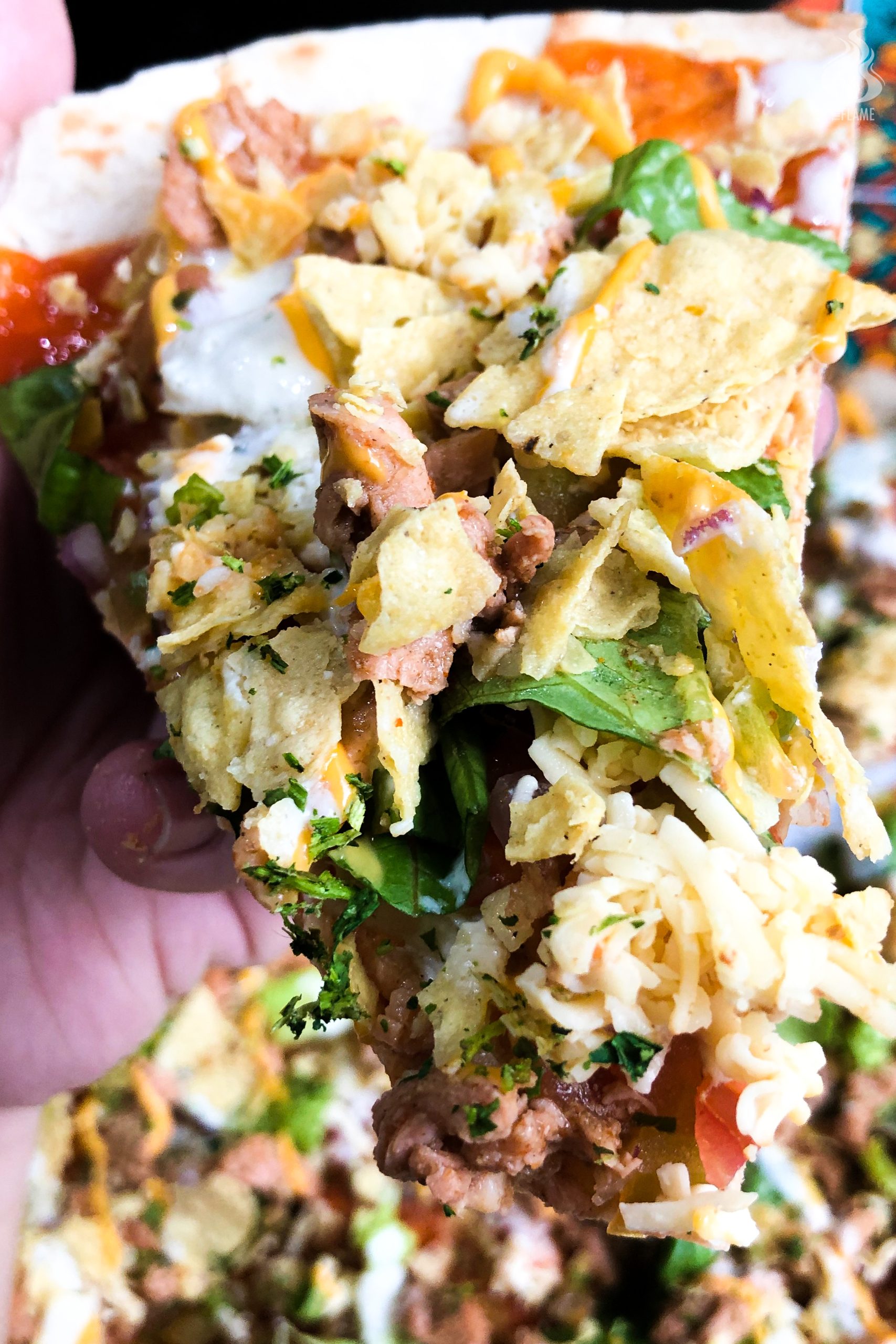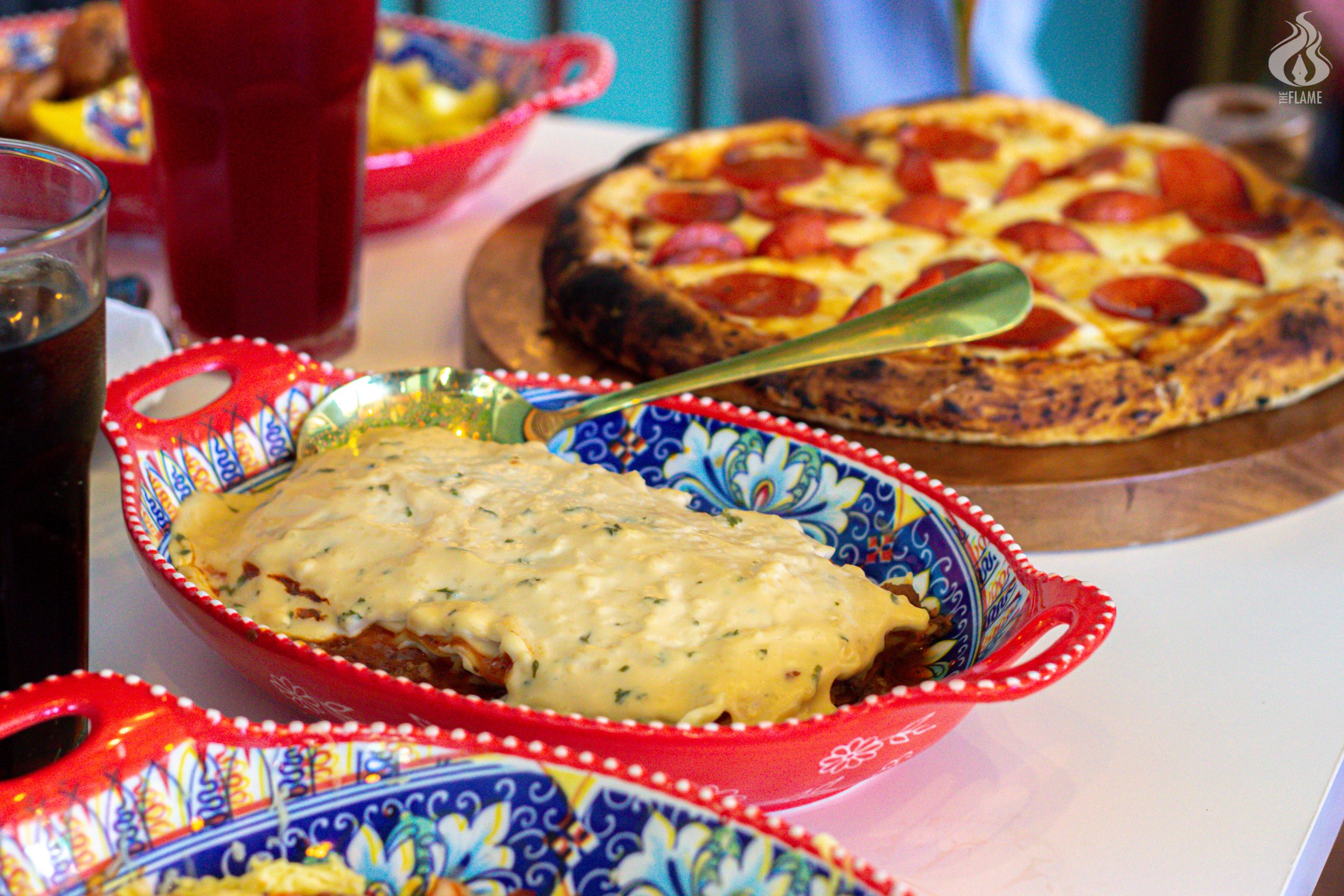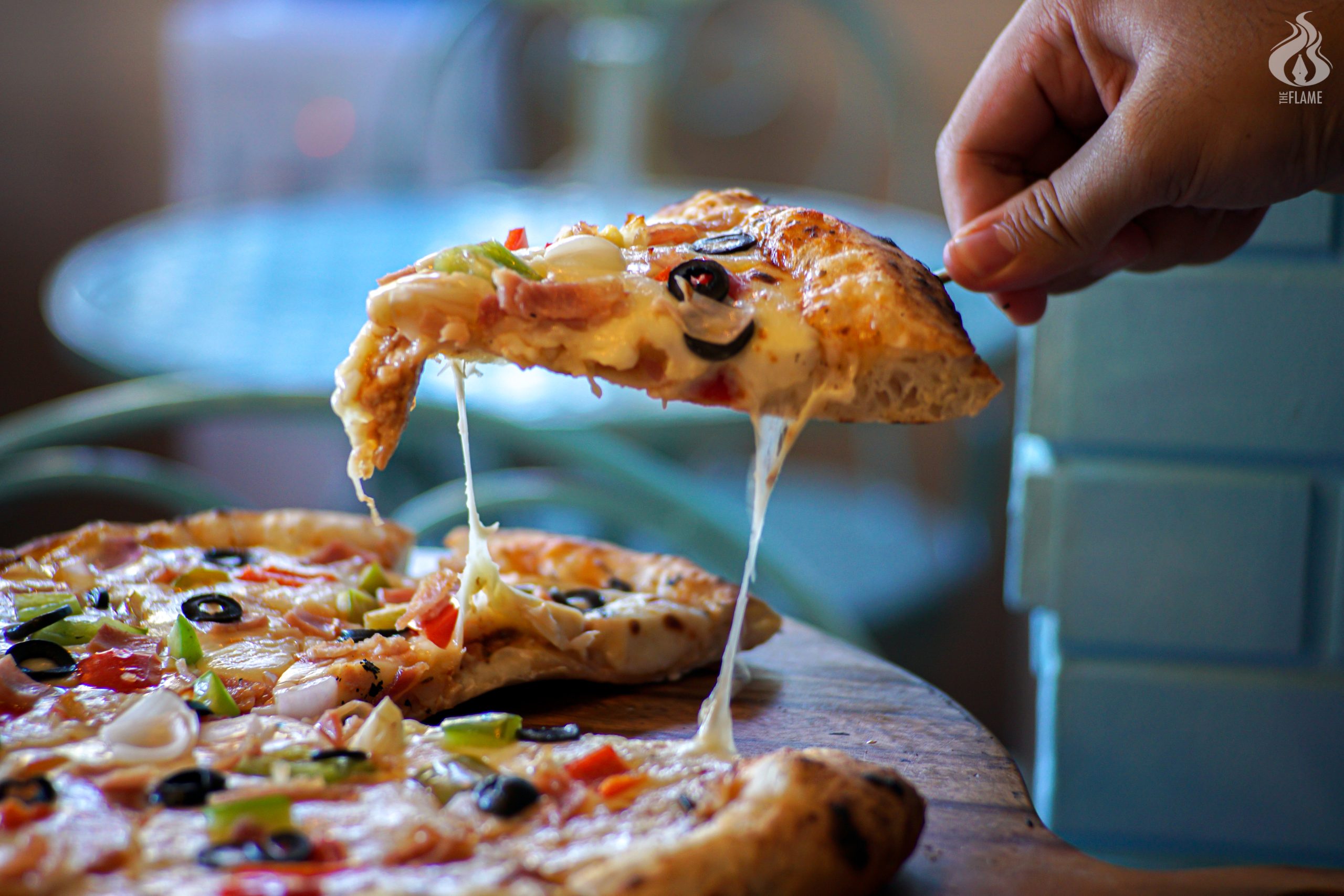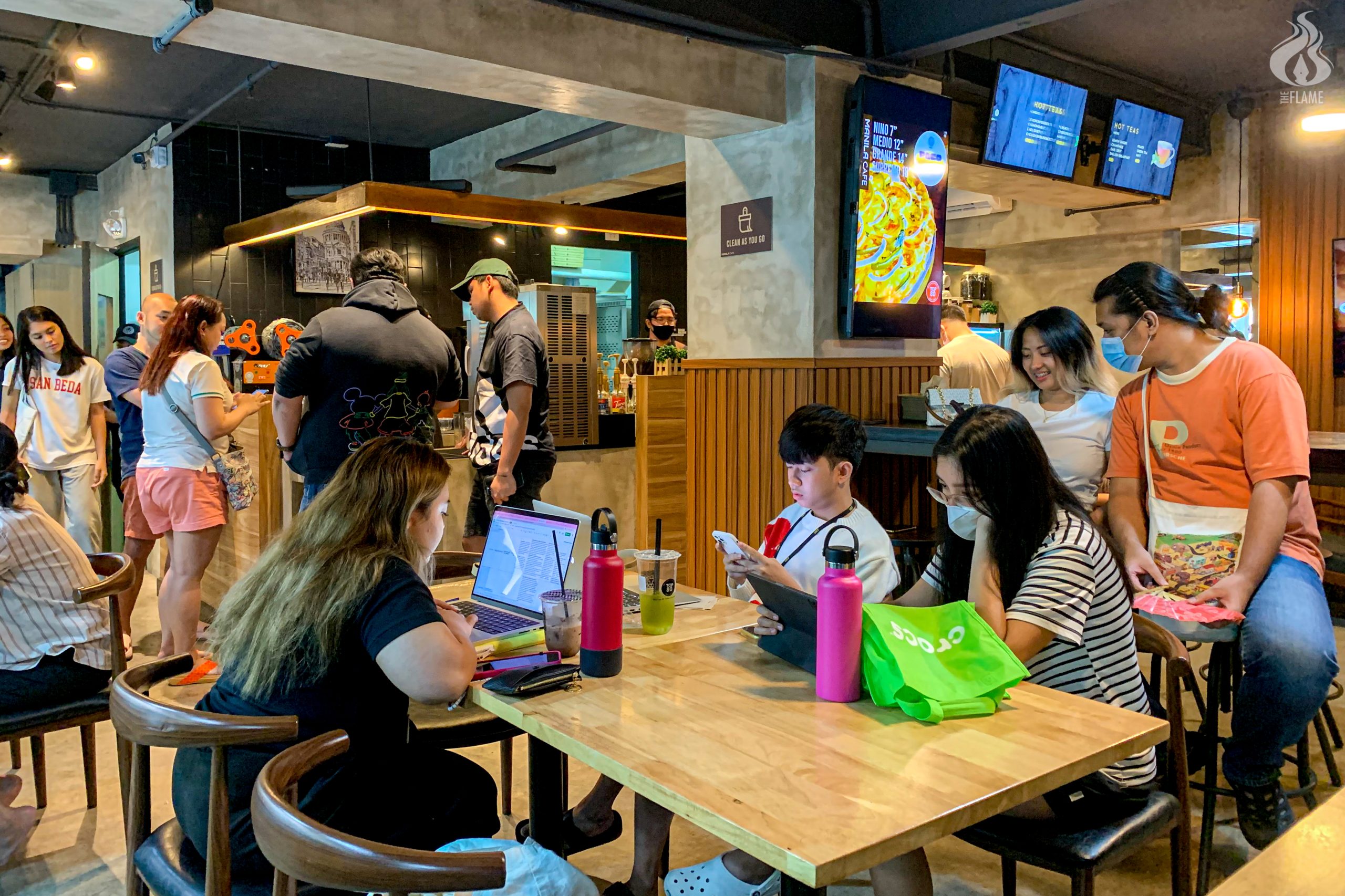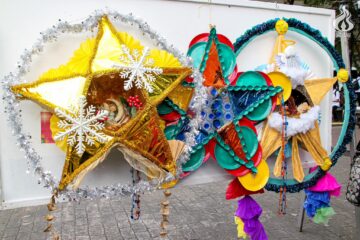THE PANDEMIC turned them into ghost towns for more than two years, but with the lifting of mobility restrictions, the streets of Manila have become bustling again, brimming with students who are looking for a good meal after hours of school work.
While some food shops around UST shuttered for good during the height of the health crisis, new ones have sprung up, waiting to be discovered by Thomasians.
The Flame visited five new cafes and restaurants near the University for you to try on your next food trip.
Mang Larry’s Isawan
The famous isawan in the University of the Philippines Diliman that has been satisfying the street food cravings of the iskolars ng bayan since 1984 has finally opened a branch near the home of the growling Tigers.
Mang Larry’s Isawan is famous for its grilled intestines and special vinegar but it has also become a one-stop for Filipinos street food as it also offers kwek kwek or fried quail eggs, fishballs, squid balls, chicken balls, cheese sticks, hotdog, chicken pop, dynamite or green chili rolls and instant pansit canton.
As Thomasian alumni, Convencido and her partner have always wanted to open a branch near UST after their graduation.
“There are not many barbecue stalls here in Dapitan, so [in college], we often eat at stalls in P. Campa,” she said.
Convencido found a spot for lease in the Dapitan area, a known eatery haven. The goal, Convencido said, is to show the Thomasian community why Mang Larry’s barbecue is so well-loved.
During the first few days of their soft opening last November, their staff were overwhelmed by the swarm of people who endured long lines to try their best-selling isaw. Compared to other barbecue stalls around the area, Mang Larry’s takes pride in its thorough cleaning process and food preparation. The meat used for its grilled offerings is washed three times, boiled, marinated, skewed, and then grilled.
Unlike the typical Filipino grilled isaw, Mang Larry’s does not have that orange-colored hue in their skewers and its offerings are visibly larger compared to those sold in the streets.
Its best-sellers include isaw manok, isaw baboy, and special isaw baboy—sweeter with a different ruffled texture than the regular isaw baboy. Another crowd favorite is their grilled goto, which is grilled ox tripe, typically found in porridge. To balance out the char, its spiced vinegar perfectly complements the skewers—no onions, cucumbers, nor chillies. It is straightforwardly delicious with just the right amount of spice and a tad bit of sweetness. Some customers even mix them up with rice like soup, or drink it straight from the cup.
Mang Larry’s Isawan is located at 2nd Floor, FuseBox Lifestyle Complex, Asturias St., Dapitan, Sampaloc, Manila
Chingu Dachi Cafe+
Located just a few blocks away from the University, this Korean-inspired coffee shop is not your average minimalist cafe. Chingu Dachi first started as a K-pop collectible store, but owner Ed Margareth Barahan-Acayan has always wanted a collectible store and a coffee shop merged into one.
“Bringing fans together is something I’ve always wanted to do, but I don’t want the cafe to be tagged as ‘K-pop’ cafe, since I also want other people, not just K-pop fans, to enjoy the cafe’s offerings,” Barahan-Acayan said.
Chingu Dachi Cafe+ first opened in Sta. Mesa, Manila in 2020, but moved to Sampaloc, Manila last December.
Setting foot at the cafe was like a K-pop lover’s dream. From the left part, you could see its stores selling K-pop albums, lightsticks, photobooks, photocards, lightsticks, among other merchandises. On the right side was its cafe, warmly welcoming with a hint of bold colors, contrasting the typical white and wood concept typically found in coffee shops nowadays.
The Korean vibe of the place was definitely not an upfront K-pop cafe, just like Barahan-Acayan envisioned. It is a cozy hangout hideaway from the loud and busy streets in Manila.
Chingu Dachi Cafe+’s menu consists of a play with Korean fusion such as Korean pork steak, kimchi fried rice, and doenjang (fermented soybean paste) pasta, quite similar in taste to truffle pasta, with an earthy and warm taste. Its menu also includes the usual food served in cafes, such as waffles, seasoned potato wedges, salads, and pastries. For K-pop lovers, the restaurant also offers the famous Inkigayo sandwich, which is commonly seen being eaten by K-pop idols in music bank shows.
The cafe’s drinks vary from iced and hot coffee, ice blended, soda pops, fruit teas, milk tea, non-coffee, and smoothies. There is definitely a drink to try for everyone. Busan seasalt milk tea is a unique experience, with its floral taste and a hint of saltiness, while its ice-blended white mocha was smooth and creamy, with a subtle taste of coffee, perfect for those who’d like coffee minus the palpitations and all-nighters.
To wrap up the gastronomic experience in Chingu Dachi Cafe+, its cube cakes are the perfect cakes to munch, which are also convenient to take home with their compact packaging.
The ‘+’ in Chingu Dachi Cafe+ remains true to its brand—they offer more than just a quick coffee fix or the latest K-pop collectibles. The overall vibe of the place, together with its food, is definitely worth coming back for.
Chingu Dachi Cafe+ can be found at 2/F 1655 Piy Margal cor. Don Quijote St., Sampaloc, Manila
La Frontera
As you wander through Asturias Street in Dapitan, your eye may easily be caught by the Filipino-Mexican restaurant La Frontera. The interior is as festive as the exterior that made it stand out. It’s a scene straight out of a Mexican street celebrating a fiesta.
La Frontera, literally meaning “the border,” wasn’t the first attempt of the four owners—all of whom met at college—at serving Mexican food. It was their food stall in Taft called By the Border, which only served the usual Tex-Mex fare. As the fad of food parks faded, the stall also closed in 2017.
Justin Chong, a co-owner of La Frontera, said that when they were planning to revive the concept, innovation became their main consideration. That was when the idea of fusing Mexican and Filipino cuisine came about. La Frontera officially opened in July 2022.
All the Mexican favorites are here, of course—nachos, cheese quesadillas, beef tacos. But the highlights of the menu, developed by chefs and co-owners Don Carpio and Cheesy Adao, are the novel dishes that blur the borders between Mexican and Filipino flavors. Kare-kare is reworked into a burrito—stuffed with rice combined with a rich peanut sauce, then wrapped in a warm tortilla with tender pieces of beef and vegetables. It is eaten with bagoong on the side, a tiny detail that completes this nod to a classic. There are tacos and quesadillas filled with adobo, tasting deep of soy sauce but nuanced by a hint of spice.
Even brownies get their twist. Who knew that chocolate and chili worked together? Don’t skip on the drinks, too. La Frontera is one of Manila’s few places to get horchata, and its house-blend iced tea is to come back for.
All the flavors at play are as alive as the fiesta interiors of La Frontera. But if there is a Filipino-Mexican commonality that La Frontera celebrates beyond cuisine, it is the generosity of the people. The place is animated by light conversations from group-filled tables and the service with a smile. It is clear that good food and company are the life of this restaurant, and they are happy you are here.
It is often said that Mexicans and Filipinos are brothers, and at La Frontera, it is obvious why.
Experience La Frontera at 1240 Asturias St., Sampaloc, Manila, 0960 297 9948.
Las Tres Marias
A recent addition to P. Noval Street’s restaurants is Las Tres Marias, which opened in October of last year.
Run by owners Diana dela Cruz and Genesis dela Cruz, Las Tres Marias is the couple’s first branch from the tiny space in their home in San Juan. They have been in business for more than five years, starting as an online food business in August 2018, making them one of its pioneers when it was not yet commonplace.
“Who are three Marias?” is a valid question to ask, especially upon seeing the huge cursive sign in the restaurant’s pink-clad exterior.
“I named it so because we have three daughters,” chef Diana dela Cruz said.
“We started when I gave birth to our third daughter, Soleil.”
Her lasagna started to gain a reputation among her officemates, who often asked for it on special occasions. Her repertoire of dishes has expanded since then, serving cuisines ranging from Italian and Spanish to Filipino. This eclectic mix of cuisines may seem incoherent to the palette, but it is not.
In the French-inspired space awash in a combination of pastel pink and blue, one tastes a range of flavors and textures. The famous lasagna, sweet from the bechamel and sour from the meaty sauce, complements well with the fried chicken that kicks with spice.
The brick oven pizzas are exceptional—generous on the tomato sauce and mozzarella which might ooze out if one does not bite carefully enough—and one cannot help but wonder how the chef achieved the finely charred crust without an actual brick oven. The grilled chicken is smoky to the bone and is a filling meal for students.
Visit Las Tres Marias at 1177 P. Noval Street, Sampaloc, Manila.
Manila Cafe
A few steps away from UST’s P. Noval gate is the home of this newest cafe.
Manila Cafe, founded by PJ Bancosta, has that cozy ambiance unique compared to other stores—including its displayed life-sized Ironman generation suites and unlimited wifi. The place is perfect for those looking for a study or hang-out place.
Marketing director Aramis Nerecina shared that Manila Cafe started as “Sampaloc Cafe” in 2021. According to him, he and his co-owners started the coffee shop because of the hobby of making coffee they developed during the early years of the pandemic.
Instead of continuing to order from other shops, he said: why not start our own? This is when they decided to expand their business and rebrand it as Manila Cafe in 2022.
Among its bestsellers are the coffee cold brew, iced white mocha (made of coffee and white chocolate syrup), and matcha latte (a concentrated tea made with green tea ‘matcha’ powder and steamed milk). All its beverages are created with distinct syrups and professional baristas who improve its customized drinks. Manila Cafe’s pizza, its main food, is named after places in Manila such as Intramuros, Paco, Malate, and Quiapo.
The place is appealing not only to the taste buds but also to the sense of sight. The three life-size Ironman figures will surely catch your attention and somehow bring you back to your childhood. According to Nerecina, a Marvel fan, the display came from his personal collection.

While the Iron Man figures is one of the attractions of the cafe, its owners are planning to remove the Marvel concept in the future and replace it with decorations that will show the aesthetics of the capital city while maintaining the cozy vibe they introduced to the public.
Nerecina admitted that opening the cafe involved taking risks as the UST decided to resume onsite classes gradually. But the risk was worth it as Manila Cafe has become a popular hangout among Thomasians.
“We love making guests comfortable […] it’s a good feeling for me,” Nerecina said.
Try Manila Cafe’s coffee and pizza at Annie’s Place Building, 1015 P. Noval Street Sampaloc, Manila. F – Eugene Paul Lorenzo and Johanna Leelan Gee with reports from Edrisse Dela Cruz

